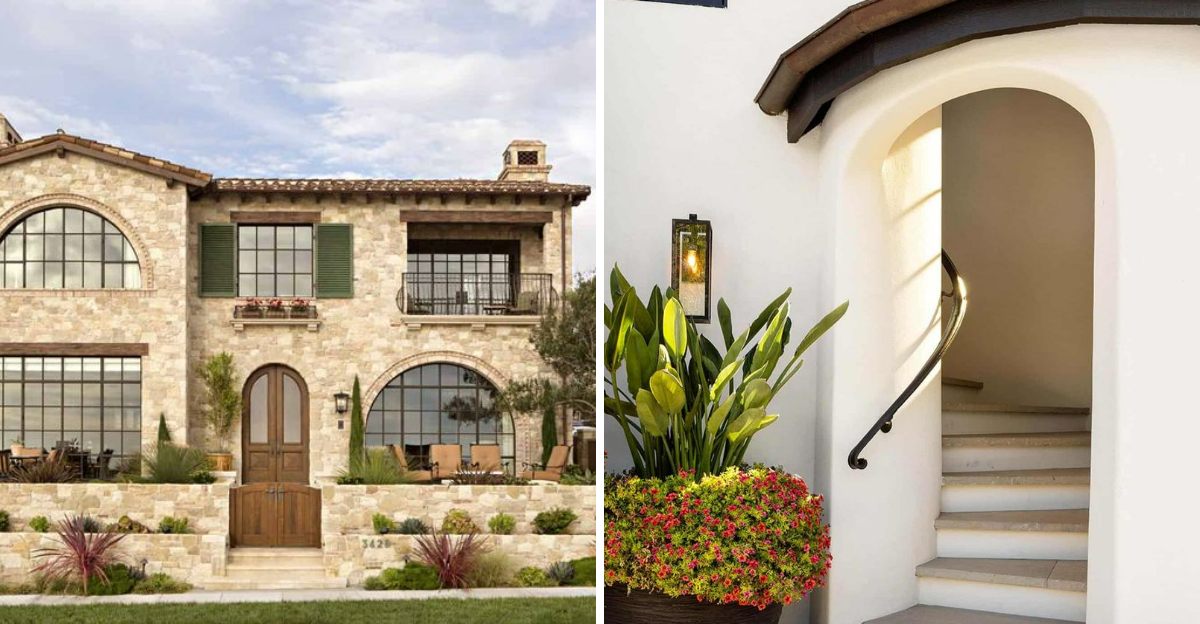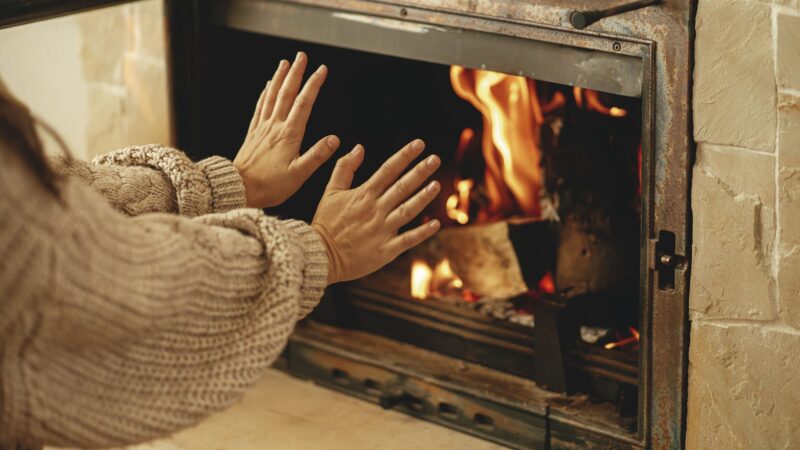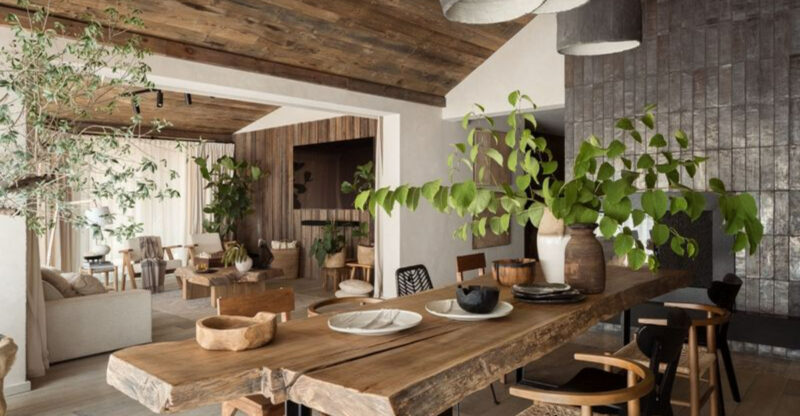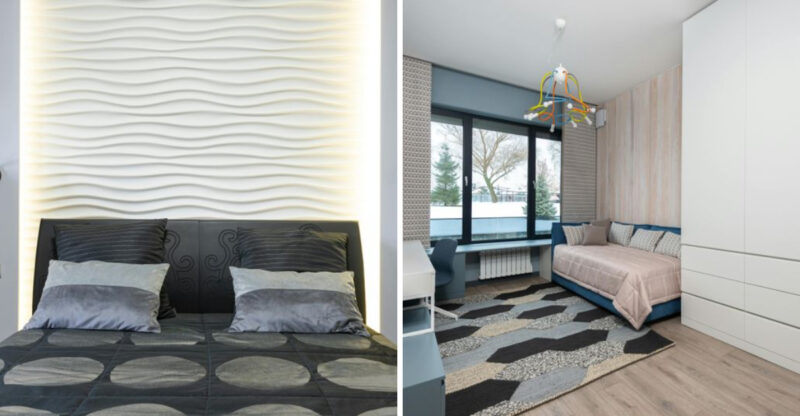12 California Home Styles Likely To Drop In Price

California’s housing market is always changing, and right now, some home styles are losing their appeal with buyers. What was once trendy and desirable may not hold the same value anymore.
I’m here to show you which architectural styles might see price drops soon so you can make smarter real estate decisions.
1. Tuscan Villas
Heavy archways and ornate iron details used to scream luxury in California neighborhoods. Now, buyers are walking away from these elaborate designs in favor of something simpler.
Modern families want clean lines and minimal fuss, not endless decorative elements to dust and maintain. The resale market is reflecting this shift, with Tuscan-style homes sitting longer on listings and selling for less than expected.
2. Mediterranean Revival
Grand entryways with intricate tilework once made a powerful first impression. But maintaining these elaborate features has become a dealbreaker for many potential buyers.
The constant upkeep required for decorative tiles, stucco exteriors, and ornamental details overwhelms busy families. I’ve noticed more buyers gravitating toward low-maintenance alternatives, leaving Mediterranean Revival homes struggling to find interested parties willing to pay premium prices.
3. Spanish Colonial Overhauls
Excessive rustic beams and oversized wooden doors can transform a home into something resembling a movie set. When renovations go too far, authenticity gets replaced with theatrical drama.
Buyers want homes that feel genuine, not staged attractions. Overly dramatic Spanish Colonial makeovers often miss the mark, creating spaces that feel uncomfortable for everyday living rather than warm and inviting.
4. Heavy Rustic Log Homes
Log cabins belong in mountain retreats, not suburban California neighborhoods. These structures come with unique maintenance challenges that scare off most buyers.
Wood rot, insect damage, and constant sealing requirements make log homes a high-maintenance investment. Unless you’re in a specific mountain community, these properties feel out of place and struggle to compete with more practical housing options available in the market.
5. Faux Modern Farmhouse
Shiplap walls and barn doors exploded in popularity, then flooded the market completely. What once felt fresh and charming now looks tired and overdone.
Every third home seems to have the same white-washed wood and industrial lighting fixtures. I’m seeing buyers reject these cookie-cutter farmhouse elements because they lack originality and already feel dated despite being relatively new installations.
6. McMansions with Mixed Styles
Combining too many architectural styles into one oversized house creates visual chaos. These homes try to be everything at once and end up being nothing special.
A turret here, a Colonial column there, and maybe some Tudor beams thrown in for good measure. The result feels disjointed and confusing rather than impressive. Buyers increasingly prefer cohesive design over size alone, making these architectural Frankensteins harder to sell.
7. Postmodern Geometric Extremes
Sharp angles and unusual shapes might win architecture awards but often fail in everyday living. These bold designs can feel cold and unwelcoming to families.
Furniture placement becomes a puzzle, and the dramatic aesthetics wear thin after a few years. What seemed cutting-edge in the 1980s and 1990s now appears dated and impractical, pushing buyers toward more timeless and functional home designs instead.
8. Dated Contemporary with Lots of Glass
Floor-to-ceiling windows seemed like the ultimate luxury feature decades ago. Now, buyers worry about energy costs, privacy issues, and intense California sun exposure.
Cooling these glass-heavy homes costs a fortune during summer months. Window treatments become expensive necessities rather than optional additions. Many families are choosing energy-efficient designs over dramatic glass walls that create more problems than aesthetic benefits.
9. Victorian Painted Ladies Needing Work
Colorful Victorian homes are iconic, but restoration costs can be astronomical. Detailed woodwork, multiple paint colors, and aging systems make these beauties expensive to maintain.
Young buyers often lack the budget and patience for extensive historical renovation projects. Unless these homes are already fully restored, they’re sitting on the market longer as potential owners calculate the overwhelming investment required beyond the purchase price.
10. Oversized Luxury Traditional
Formal living rooms, dining rooms, and sitting rooms made sense when entertaining was different. Today’s families want open, flexible spaces instead of separated formal areas.
Heating and cooling these massive traditional homes drains wallets monthly. The layouts feel stuffy and impractical for modern lifestyles focused on casual family gatherings. Buyers are choosing smaller, more efficient homes with better flow over sprawling traditional floor plans.
11. Desert Modernism Past Its Prime
Mid-century desert modern homes were revolutionary in their time. But without proper updates, these properties show their age through outdated systems and worn materials.
Original features that once defined cool California living now need expensive replacement. Flat roofs leak, single-pane windows waste energy, and vintage plumbing fails regularly. Buyers want the aesthetic but not the costly renovation projects that come with authentic but neglected examples.
12. Cookie-Cutter Tract Homes
Identical homes lining entire streets offer zero individuality or character. These mass-produced properties struggle to stand out in a competitive market.
Buyers want something that reflects their personality, not a clone of fifty other houses. Small yards, thin walls, and generic builder finishes make these homes feel temporary rather than special. I’m watching prices soften as people seek unique properties with actual character and quality construction.






